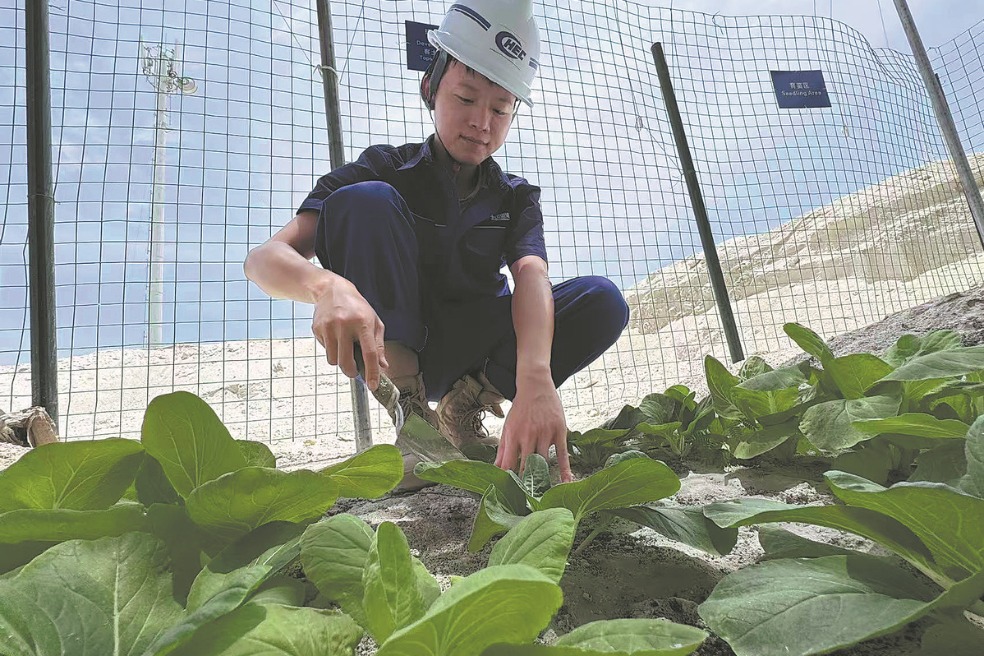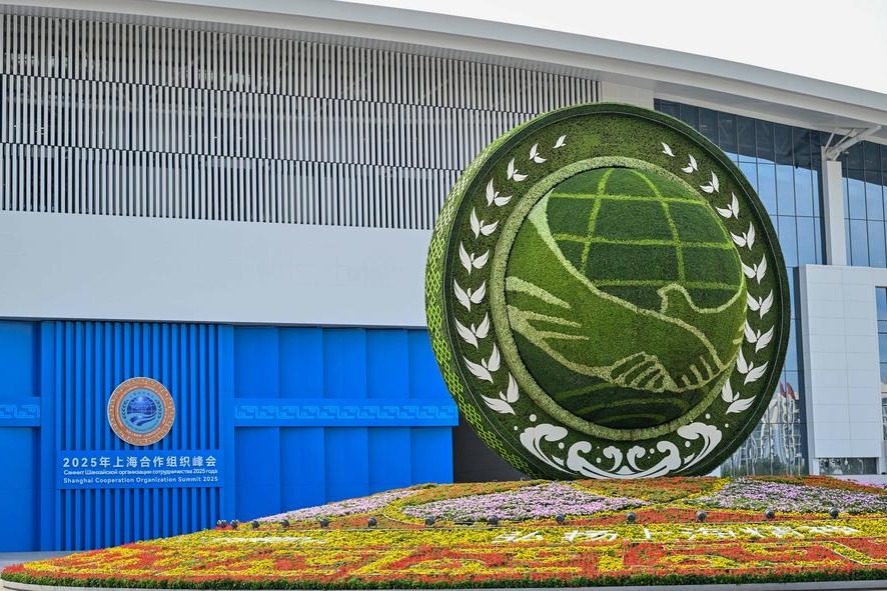Nation's 1st offshore CCS project hits green milestone

China's first offshore carbon capture and storage (CCS) demonstration project has reached a significant milestone, injecting over 100 million cubic meters of carbon dioxide into the Enping 15-1 oilfield in the Pearl River Mouth Basin.
The project, which captures CO2 and injects it into the oilfield to enhance oil recovery, demonstrates China's growing capabilities in CCS technology and its commitment to achieving its goals of peaking its carbon emissions before 2030 and achieving carbon neutrality before 2060, project operator China National Offshore Oil Corp (CNOOC) said on Wednesday.
CNOOC said the project has reduced carbon emissions equivalent to planting 2.2 million trees. Over the next decade, the Enping 15-1 oilfield is expected to inject over 1 million metric tons of CO2, boosting crude oil production by 200,000 tons, it said.
As an emerging technological approach to the efficient, low-carbon development of fossil energy, CCS stores or utilizes captured CO2, thereby reducing carbon emissions.
"The successful operation of the Enping 15-1 project marks a major step forward in China's efforts to develop and deploy CCS technology," said Xu Xiaohu, deputy general manager of CNOOC's Enping operations company.
"This project provides a replicable and scalable model for the green and low-carbon development of offshore oil and gas fields," he said.
Enping 15-1 oil reservoir is chosen as a demonstration offshore carbon capture, utilization, and storage (CCUS) project because of its high CO2 content.
While exploiting such a reservoir used to release CO2, causing environmental damage and infrastructure corrosion, advancements in CCS have transformed this problem. The project now employs "CO2 flooding," a closed-loop system where captured CO2 from extraction is reinjected for enhanced oil recovery and permanent storage.
China's CCUS technology has advanced significantly recently. A national plan revealed that the country now has 126 operational CCUS projects, a substantial increase of 77 projects since 2020.
CNOOC has been developing a large-scale CCS cluster project in Huizhou, Guangdong province, which will capture carbon emissions from various companies in the Daya Bay area and transport them for storage in the Pearl River Mouth Basin.
The company also plans to establish CO2 enhanced oil recovery centers in northern and southern parts of China, it said.
The CO2-enhanced oil recovery is a technique used in the oil industry to extract additional crude oil from existing oilfields while simultaneously storing CO2 underground by injecting it into the reservoir. This injected CO2 mixes with the remaining oil, reducing its viscosity and swelling its volume.
While traditional oil recovery methods typically extract just 18 to 20 percent of a reservoir's crude oil, CO2 flooding can increase recovery rates by 7 to 15 percent and extend the reservoir's life span by 15 to 20 years, according to Tang Yong, a professor at Southwest Petroleum University's Petroleum Engineering School.
Wu Yiming, production manager of CNOOC's branch in Shenzhen, Guangdong province, said the advancement of CCS technology will provide technical support for China to achieve its carbon neutrality goals and promote the transformation of the energy industry toward a green, low-carbon, and sustainable direction.
Industry analysts believe the project demonstrates that the country has the engineering capabilities to execute complex offshore CCS projects.
While enhanced oil recovery using CO2 can help offset some of the costs of CCS, the long-term success of CCS in China still requires significant investment in geological surveys and infrastructure, said Lin Boqiang, head of the China Institute for Studies in Energy Policy at Xiamen University.
"The scale of CCS deployment needed to meet China's carbon neutrality goals is enormous," he said. "To truly make a difference, China needs to accelerate the development of large-scale CCS clusters, which requires strong government support, including clear regulatory frameworks and financial incentives."
Today's Top News
- Overhaul pledged after pre-made meal controversy
- US push on tariffs condemned
- Promoting international rule for fairer global governance
- Madrid talks show negotiations remain the best way forward: Editorial flash
- China, US reach basic consensus on TikTok
- Nation's growth steady amid headwinds






























